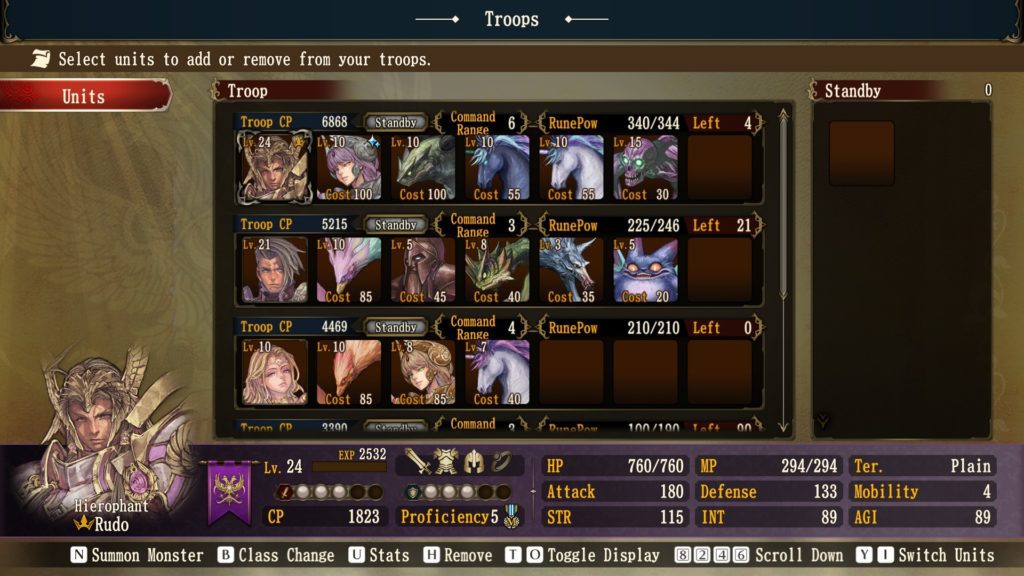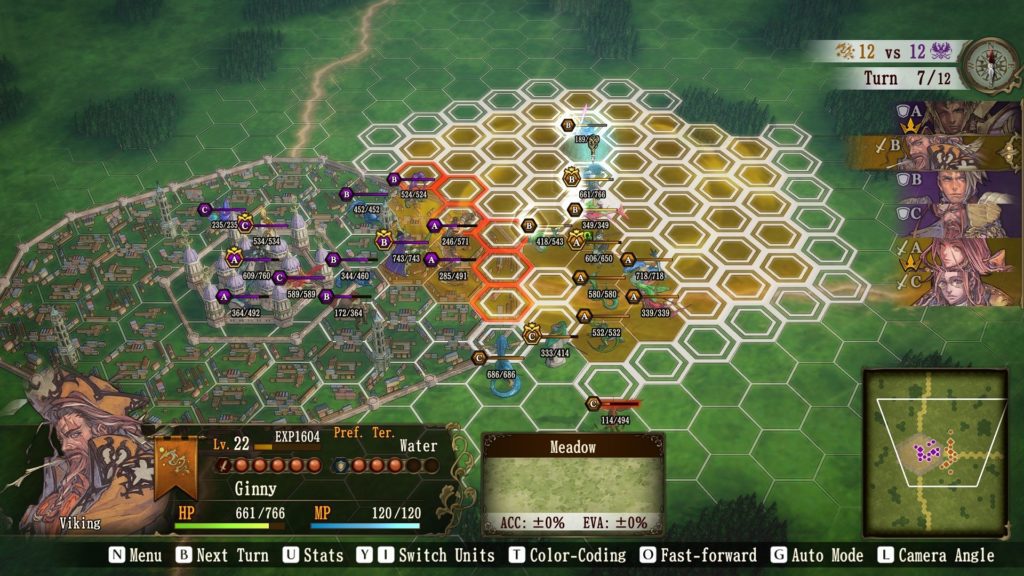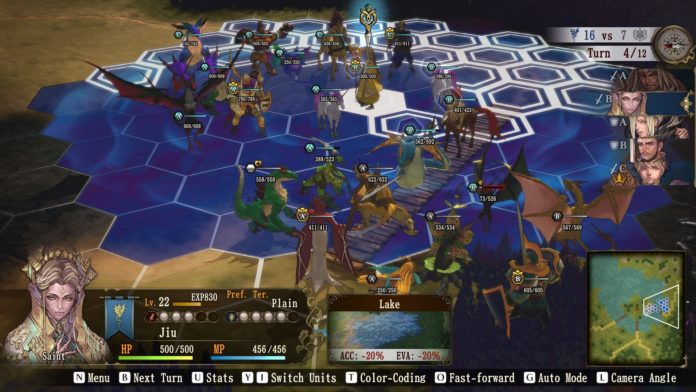REVIEW : Brigandine The Legend of Runersia (PC)
Brigandine: The Legend of Runersia is a top-down, turn-based, grid-based JRPG.
It centres around you choosing a country to play as and then attempting to conquer the continent by defending your castles and assaulting neighbouring castles until ultimate conquest is achieved.
Runersia is a soft-sequel to 1998’s Brigandine: The Legend of Forsena, and while it lacks the depth and polish of the original, it manages to keep somewhat close to what veteran Brigandine gamers are used to.

Brigandine’s plot is a political one, with the continent’s six factions battling for control of the continent and its mana supply. The motivations and rationales of each group differ, such as Guilmole’s power vacuum and inner anguish, which sees Eliza rise to the presidency from her lowly beginnings as a dancer. The Holy Gustav Empire, a fascist dictatorship that sees superiority in its blood and tries to redress earlier wrongs committed against their now fragmented empire, is a stark contrast. A pirate faction and naked anarchist fairies are also present. The notion is that it shouldn’t be difficult to identify a faction that appeals to you.

What’s difficult is sitting through long conversations that rarely move the plot forward, often consisting of characters commenting on the state of the world, introductory scenes for your Rune knights that you’ll never hear from again, or lore that’s rigorously developed but made in no way interesting. While I appreciate the effort put forth in writing the six separate stories, Brigandine over-explains what motivates its kingdoms but never attempts to engage the player on the same level.
When the characterization for the various groups is so detailed, it feels hollow not to get the player committed and fired up to conquer the territories in the same capacity as the characters. Too much time is spent on trope-heavy moments rather than building a distinct opposing force against which you must rise, leaving the player to battle first and the plot to contextualise itself later.
Thankfully, after completing the story mode, a challenge and creative option that removes any story in favour of more arcade-style gameplay become available. As a result, I preferred these settings significantly more.

Challenge mode assigns you more challenging objectives such as holding a particular number of castles before a given date while dealing with random events and loot drops that might be beneficial or bad. Surprisingly, this version of the game flows better and seems more gratifying to play than the story. The ability to mix and match Rune knights from all factions (if you’ve earned them through the plot) is welcome freedom that provides some incentive to play through the alternate factions.
The real gameplay is divided into two stages: organisation and attack. The organisation phase consists of summoning monsters, equipping units, and travelling between towns to launch strikes. While keeping your troops in good condition is a pleasant process when their strength pays off in battle, managing an ever-increasing number of armies becomes a tiresome task. Most of the time, relegating new Knights to quest farming for gear is easier because there aren’t enough places of combat or something like permadeath to necessitate 20+ armies. There is no other mechanic, aside from arranging these auto-quests, that produces excitement when returning to the organisation phase, such as city administration or relationship cultivating. The real gameplay is divided into two stages: organisation and attack. The organisation phase consists of summoning monsters, equipping units, and travelling between towns to launch strikes. While keeping your troops in good condition is a pleasant process when their strength pays off in battle, managing an ever-increasing number of armies becomes a tiresome task. Most of the time, relegating new Knights to quest farming for gear is easier because there aren’t enough places of combat or something like permadeath to necessitate 20+ armies. There is no other mechanic, aside from arranging these auto-quests, that produces excitement when returning to the organisation phase, such as city administration or relationship cultivating.
The scenery surrounding the fighting is distinct to each map, although it is aesthetically unappealing. Most of them prefer flat plains, lush woods, and vast oceans. There are environmental factors that benefit and degrade units, but they are non-existent in gameplay and appear insignificant to conflicts since most can be brute-forced.

Brigandine, on the other hand, commits what I consider a cardinal mistake for tactics games: the maps are simply too large. It’s tedious if the player has to spend three or four turns just marching towards conflict with no tension developing to excite the possibility of attacking the opponent, especially when there’s so little tactical analysis required.
I believe the only thing that distinguishes Brigandine is its character art, not its bang!
-go-to-the-horny-jail fan service.
Both monsters and Rune knights are highly detailed, and I was particularly taken with the small miniatures utilised in battle, such as the Gremlin creature. Given that this is a Switch port, it’s worth noting that it works well on PC. The only peculiar features are the bizarre mouse and keyboard controls. We’re talking ‘J’ and ‘K’ replacements for ‘A’ and ‘B’ levels of insane. Granted, it’s a non-issue, but it’s still an obscurity. I wholeheartedly support the use of a controller to streamline everything.
Final Thoughts Brigandine: The Legend of Runersia feels dated in comparison to some of the tactical advances achieved in recent years. It’s not so much that every project must be original or replicate the mechanics of its competitors, but there has long been a norm of providing more than just battle after battle. What’s here is competent, with enough variety to keep you entertained for numerous plays.














